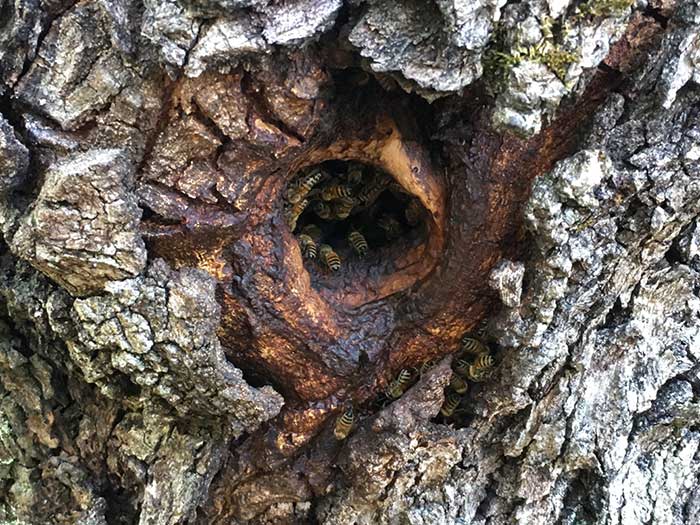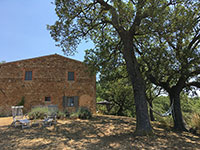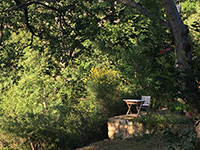A swarm of bees at Casa Vacanze Podere Santa Pia | Bees in a hollow tree |
Bee colonies
Tree hollows
|
||||
A bee tree is a tree in which a colony of honey bees makes its home. A colony of bees may live in a bee tree for many years. Most bee trees have a large inner hollow, often with an upper and lower entrance. Colonies in trees have fixed comb, so inspection and management is impossible, as is most harvesting without destroying the colony. A beekeeper can perform a cut-out on a gum hive. The trunk is cut open to expose the cavity, and the comb is carefully removed and strapped into standard frames. The frames are then put to a conventional hive, such as a Langstroth hive. The bees will follow into the new hive especially if the queen and brood can be transferred. |
 |
|||
Diagram of honey bee nestt from: Seeley, T. D., Morse, R. A. (1976).
|
||||
If the tree is cut down and the trunk section containing the colony is removed, the result is a log gum or gum hive. A log gum is essentially a bee tree cut into a short section that contained a colony of honey bees. It got its name from the fact that when gum trees die they rot from the inside out, thereby creating a large cavity in which bees would commonly nest. These hives are fixed comb hives and, therefore, medicating and inspecting is almost impossible.
|
||||
Walking in Tuscany | From Podere Santa Pia through the woods to Castiglioncello Bandini
|
 |
 |
 |
||
Queen bee (center)
|
Worker bee | Larger drones compared to smaller workers
|
||
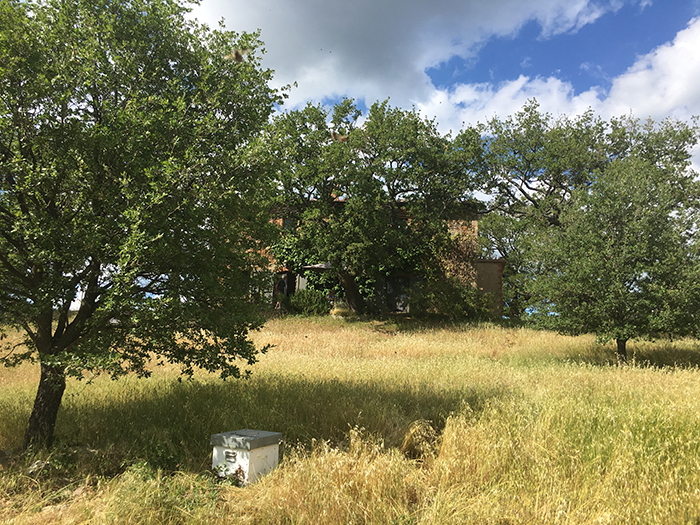 |
||||
The first hive at Podere Santa Pia
|
||||
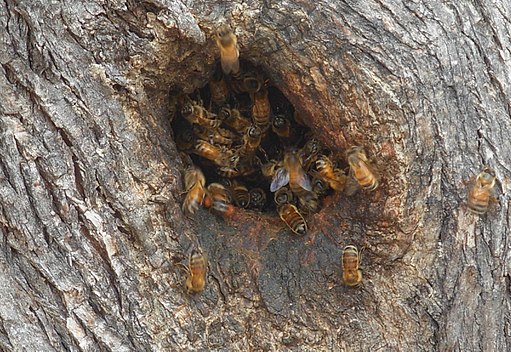 |
||||
| Bee nest inside tree hole | A swarm attached to a branch
|
How to capture a swarm | ||
Walking in southern Tuscany | Itineraries exploring Castiglioncello Bandini and the Mediterranean macchia in the valleys around the village
|
||||
Podere Santa Pia |
Colline sotto Podere Santa Pia |
|||
 |
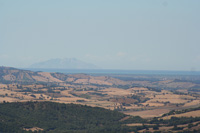 |
 |
||
|
|
|||
|
||||
Mappa Podere Santa Pia | Ingrandire mappa
|
||||
Questo articolo è basato sugli articoli Bee tree dell' enciclopedia Wikipedia ed è rilasciato sotto i termini della GNU Free Documentation License.
|
||||
